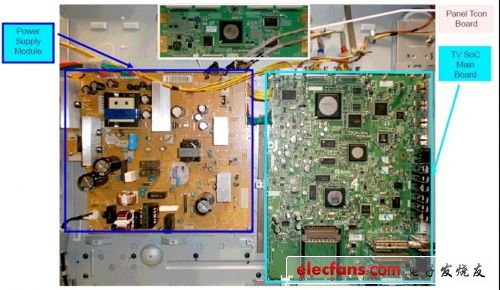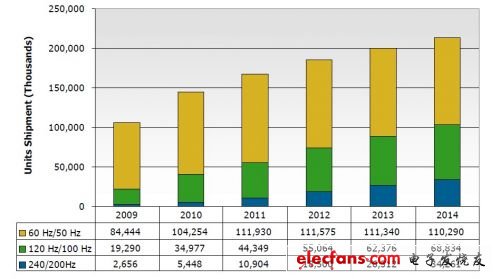The evolution of TV technology
John Logie Baird first demonstrated the transmission of action images in 1925. This breakthrough development was recognized as the first true display of television. Over the next few decades, this system will undoubtedly have many more elaborate improvements, including advances in broadcasting methods, but the basics of television are still the same: receiving an analog signal and displaying it on a glass screen. Color replaces black and white, rear projection products complement the cold cathode tube (CRT) deficiency, cables and satellites become transmission media, but ultimately the TV is an analog display.
Everything changed after the advent of the world ’s first high-resolution flat-screen TV in the mid-1990s. New TVs using plasma technology are only a fraction of the thickness of a CRT. Immediately afterwards, new interface technologies, such as digital imaging interface (DVI) and high-resolution multimedia interface (HDMI), appeared, which predicted the trend of analog TV to digital TV.
However, this is just the beginning. HDMI allows high-resolution images of increasing playback formats to be displayed on our home entertainment systems. The requirements for bandwidth are beginning to increase, and the limitations of existing TV structures are becoming more and more obvious.
Flat TV structure
If we simply look at the main parts of a flat-screen TV, we will find:
-Display panel (plasma, LCD, organic light-emitting diode)
-Timing controller (Tcon) board, used to drive the panel
-Image processor board with system on chip (SoC) IC. It is responsible for converting the information stream received from the signal source into the correct format of Tcon.
-Power supply module

Figure 1: Disassembly diagram of a general flat-screen TV
When the size of the flat-screen TV is still small, the SoC and Tcon can be fixed on the same printed circuit board (PCB). However, when the size of the screen increases, it becomes too expensive (and too heavy) to continue to use a large PCB, thus gradually forming a solution of two boards.
When SoC and Tcon are placed on different PCBs, a interconnected technology is needed to transmit signals between them. In the mid-1990s, TV manufacturers adopted LVDS interface technology as the de facto standard.
LVDS technology
LVDS (Low Voltage Differential Signaling) was developed by National Semiconductor in the early 1990s and was first used in televisions in 1996. Sixteen years later, it is still the dominant technology for this application. The real name of this technology is actually FPD-Link, but because it is the first large-scale application of LVDS, many engineers use FPF-Link and LVDS as synonyms.
LVDS is defined in the ANSI / TIA / EIA-644-A standard, which was adopted by the Data Transmission Interface Committee TR30.2 in 1995
The standard of annual development. It is a low-voltage, low-power differential technology, mainly used in point-to-point and multi-point connection drive applications. This standard recommends a maximum data rate of 655 Mbps, but the recently introduced high-speed LVDS limit has been increased to approximately 1.2Gbps.
LVDS is designed to drive 7 data bits per clock. Every 5 data channels require a separate clock channel, which means that the fixed cable cost is increased by approximately 16%.
LVDS and its scalability
LVDS has been popular in the industry for many years, and recent advances in resolution and playback formats have led to a significant increase in bandwidth. TVs with 60Hz and 120Hz update frequencies have been sold in stores, and even 4Kx2K TVs were displayed at the 2012 CES show. As a result, the number of LVDS lines used to support these bandwidths has increased considerably, causing TV manufacturers to add more cost and complexity in production.
As the market estimates that the number of TV shipments with higher update frequency will grow steadily, the LVDS restrictions will become more obvious. Cost pressures and engineering constraints will force TV manufacturers to seek alternative solutions.

Figure 2: Estimated 60/120 / 240Hz TV shipments
Shenzhen Ri Yue Guang Hua Technology Co., Ltd. , https://www.ledlightinside.com